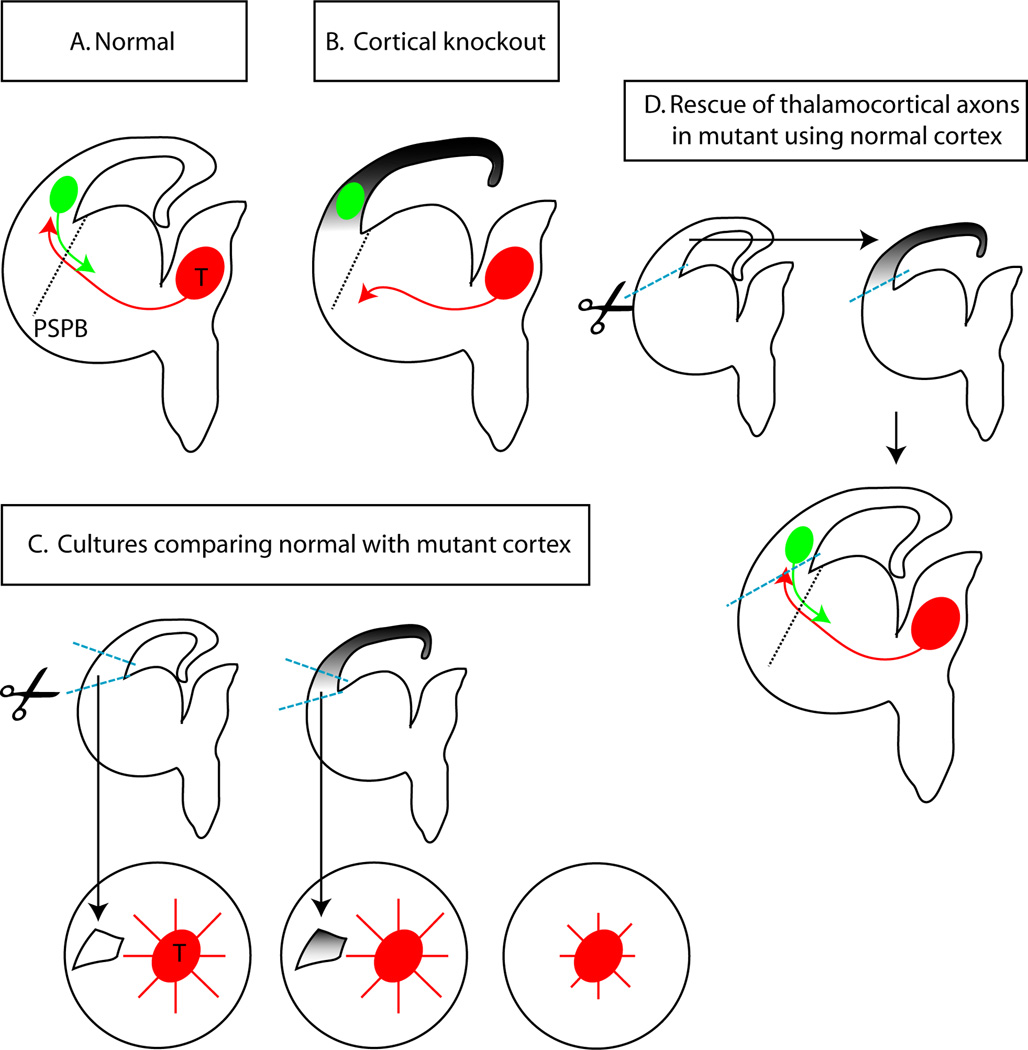Figure 5.
A summary of recent experiments testing the importance of corticofugal axons for thalamic axonal crossing of the PSPB carried out by Chen et al. (2012). (A) Normally, axons from the thalamus (T; red) cross the PSPB in close association with descending axons from the cortex (green). (B) In conditional Emx1Cre; APCloxP/loxP mutants, the development of cortical neurons and hence of corticofugal axons is blocked but, although the thalamus and ventral telencephalon are unaffected, thalamic axons do not cross the PSPB. (C) Culture experiments showed that both normal cortex and mutant cortex stimulate the growth of axons from the thalamus by equal amounts. This suggests that the inability of thalamic axons to cross the PSPB in Emx1Cre; APCloxP/loxP mutants is unlikely to be explained by long-range chemorepulsion by mutant cortex. (D) When normal cortex was substituted for mutant cortex in slice cultures from the brains of Emx1Cre; APCloxP/loxP embryos, corticofugal axons were restored and thalamic axons were able to cross the PSPB. These results provide evidence for the importance of corticofugal axons in allowing thalamic axons to cross the PSPB.

